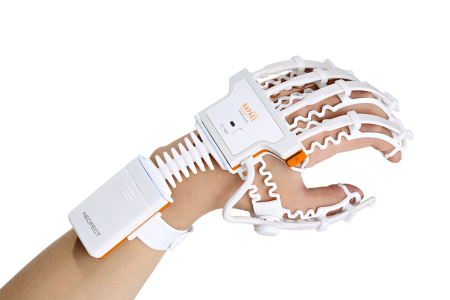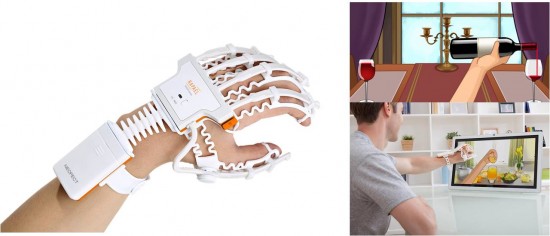November 6, 2015 – Guest blogger, Korean-born Ho-Young Ban, lost his father to stroke and witnessed two of his uncles suffering from strokes unable to get rehabilitation they needed because of lack of affordability. Necessity being the mother of inspiration seems to have worked here because Ban is not only the writer of this piece, but also the CEO of a company, NEOFECT, that has built a smart rehabilitation technology designed to help victims of stroke recover movement in an afflicted limb.
A bit of background that is less personal than Ban’s family story. According to the Global Atlas on Cardiovascular Disease Prevention and Stroke, the number one global cause of death from disease today, amounting to 17.3 million annually, is caused by a cardiovascular event. Many of these include strokes, from minor transient ischemic attacks, to major incidents leaving the patient partially paralyzed. Consider that number. It is just under half the population of Canada each year succumbing to this disease.
Now I’ll let Ban tell the rest of the story.
———-
According to the World Heart Federation, 15 million people worldwide suffer a stroke every year. Predictions for the next two decades suggest this number will triple with the largest growth in Latin America, the Middle East, and sub-Saharan Africa. Stroke is happens everywhere. It is the biggest cause of adult disability in the United States with 85.6 million Americans living with some form of cardiovascular disease or the after effects of stroke.
The victims of stroke often experience long term disability due to neuron damage, not damage to their muscle cells. The neurons cannot be revived but you can enhance the brain’s plasticity by training those cells that remain undamaged.
To achieve this NEOFECT looked at a combination of hardware device, to aid movement in the disabled body part, and software to analyze and boost the rehabilitative process. The end result the RAPAEL Smart Rehab Solution, a combination of biofeedback device (a sensor-loaded glove worn by the patient) and systematic software, designed specifically to help patients with central nervous system disorders recover movement. The solution provides game contents designed by physicians and medical experts to cause brain plasticity and muscle retention for patients with chronic stroke. Furthermore the use of advanced gaming technology makes rehabilitation more effective and fun.
- Gamification: The gamification elements and user-friendly interface motivates the patient throughout the rehab process. It helps to induce neuroplasticity for hand function of patient with brain damage while patents are playing games (Seeing and hearing the sound of games). Various rehabilitation games are updated monthly and each game has a purpose to help rehabilitation of certain movements, for example, squeezing an orange for finger flexion/extension, or pouring wine to enhance forearm pronation/supination (see game images and glove below).
- Learning Schedule Algorithm: This software analyzes the data collected by the gloveand provides training tasks based on the patient’s activity level. Algorithm is designed to enhance learning multiple function tasks by proposing an optimal task in proper challenging difficulty based on patient’s data such as training progress, prescription, personal interest, motor function scores etc.
RAPAEL Smart Glove was featured as one of 13 innovative products in the most recent REHACARE, the largest annual European rehabilitation fair. There it received device approval from several regulators including those in Korea and the United States. NEOFECT’s long term aim to make RAPAEL accessible for both rehabilitation therapy in hospital and clinical settings as well as for home use. Watch this YouTube video to see just how it works.

















